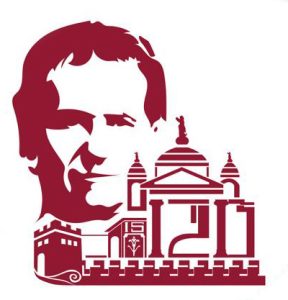【慈幼通訊社 ─ 2017 年 7月 18 日匈牙利布達佩斯訊】 ─ 「匈牙利是目前慈幼會全球最小的會省,只有34名會士,卻有著光輝的未來。」在1948年共產政權執政以前,匈牙利會省有超過200名修道人士,包括多名傳教士及總部議會成員。然而,經過四十年共產政權的洗禮後,聖召推廣受阻,慈幼會士數目大幅下降。自2004年起,總會長從印度、波蘭及越南,派遣多名傳教士到當地。一些很有意義的慈幼會事業現已開展,而聖召數目近期亦已回升。
慈幼會匈牙利「聖斯德望國王」會省財務長Geza Nadudvari修士,分享了一些他對整個歐洲、他的祖國,以及慈幼會士臨在當地的一些反省。
過去,歐洲慈幼會士傾向於懷有一份優越感。今天,有賴天主的指引,即使年長的慈幼會士,都明白我們的獻身聖召,是使我們共融的最重要元素,而越多不同國家的慈幼會士到來,慈幼會士團體便更為豐富,對當地青年更富吸引力,這有賴年青傳教士的貢獻。
在教會受迫害的四十年中,我們曾有不少年長的慈幼會士,只有四位尚存至今。因此我們唯有展望將來。然而,有賴少數本地慈幼會士及傳教士的心火,我們有著光輝的前程。我們正逐漸從底處冒起,而慈幼會神恩仍不斷結出果實。
我們在國內的事業始於1913年,在1989年國家回復自由後,我們慈幼會士在考津茨包爾齊考,復修了一些以前的中心及設施,建立了一個令人讚嘆的會院。這是匈牙利東部的一個團體,位於國內尚未發展的地區,深受共產主義影響,亦是龐大的Rom其中一個團體的所在地。如此,在現代歐洲的中心存在着慈幼會其中一個最重要的福傳根據地。
當我們受派遣來到這裡開展事業時,我們都深感自豪。我以成為匈牙利慈幼會事業先驅而感到榮幸。2006年,我們與兩名慈幼會傳教士,成立了一個新團體,事業發展神速,猶如鮑思高在華道角所經歷的一樣。事實上,事業在天主恩寵的護佑下蓬勃發展,僅數年間便成立了一所為貧窮人士而設的大型職業學校、一個堂區以及一所中學,這是慈幼會士在匈牙利最強和最具意義的臨在。
在慈幼會修士沈道爾,於2013年獲封為真福後,我們會省的慈幼會修道聖召,受著「沈道爾效應」的影響。這位真福沒有作過非凡的事,猶如聖方濟沙雷氏和聖鮑思高一樣,以滿全他們的本份,達到神修的高峰。
我在匈牙利當修士時,這種聖召對青年毫無吸引力,只視為司鐸聖職的一個過渡。這一次冊封真福品,使人們開始認識這種聖召。今天,真福沈道爾的形象,廣為青年所認識,那些從沒考慮司鐸聖召的人,也可誠心回應天主的召叫,成為慈幼會修士。事實上,這現象確實是天主的降福,勝過一切人力。自從沈道爾獲真福品後,我們每年至少有一人,願意追隨慈幼會修士聖召,我們不斷蒙受祝福,慈幼會初學生接踵而來!
匈牙利會省網址:http://www.szaleziak.hu/
Between Project Europe and “Sandor Effect”
(ANS – Hungary –Budapest, 18 July 2017) – “Hungary is currently the world’s smallest Salesian Province with only 34 Salesians, but it has a very brilliant future ahead of it. Prior to the advent of the communist regime in 1948, the Hungarian Province had more than 200 consecrated persons, including many missionaries and General Council members. But under – and after – the 40-year regime, vocational promotion was interrupted and the number of Salesians fell considerably. Since 2004, the Rector Major has sent a good number of missionaries from India, Poland and Vietnam. Some very significant Salesian works have been opened, and the recent vocational flow has increased.”
Salesian Brother Geza Nadudvari, Economer of the “St Stephen King” Province of Hungary, shares some of his reflections on Europe, his country and the Salesian presence.
In the past, Salesian Europe tended to have an attitude of superiority. Today, thanks be to God, even the older Salesians have realized that our consecrated vocation is the most important aspect that unites us and that the more Salesians are present from several different countries, the more the Salesian community will be enriched and more attractive even to the local youth, thanks to the contribution of young missionaries.
In the past, we had more older Salesians who survived 40 years of persecution. Now there are only four of them. That’s why we can say we just have to look ahead. But thanks to the enthusiasm of the few local Salesians and missionaries, our future is bright. We are slowly emerging from below and the Salesian charism still generates its fruit.
Our presence in the country started in 1913 and, re-liberated in 1989, as Salesians we have recovered some old traditional centers and infrastructures and started a marvelous house at Kazincbarcika. It is a community in eastern Hungary, one of our country’s underdeveloped regions most affected by Communism, and where one of the great Rom communities resides. Thus, in the heart of modern Europe, one of the most important Salesian missions is located.
When one is assigned to that work, we all feel privileged, and I am honored to be the first Hungarian pioneer there. In 2006, we started a new community with two Salesian missionaries and it developed as if miraculously, like Don Bosco’s experience in Valdocco. In fact, in God’s grace, in only a few years a wonderful mission has emerged with a huge vocational school for the poorest, a parish and a secondary school, and it is now the strongest and most significant Salesian presence in Hungary.
There was also a “Sandor effect” on the Salesian consecrated vocations in our Province following the beatification of Salesian Coadjutor Stefano Sandor in 2013 – a blessed one who did not do exceptional things but just like St. Francis of Sales and Don Bosco, reached spiritual peaks in the fulfillment of their own duties.
At the time I was the only Coadjutor in Hungary and so this vocation did not appeal to young people; it was only considered a passage to priesthood. Beatification was the first occasion for public sharing of this consecration. Today, the figure of Blessed Sandor is widely known among young people, and those who have never considered the priesthood vocation might willingly respond to God’s call to become Salesian Coadjutor. In fact, it is certainly more a blessing from heaven than the result of a human effort, but since we have blessed Stefano Sandor, we have at least one vocation to the consecrated life of the Salesian laity every year, and we are constantly blessed with new Salesian novices!
The website of the Hungarian Province is available at: http://www.szaleziak.hu/


